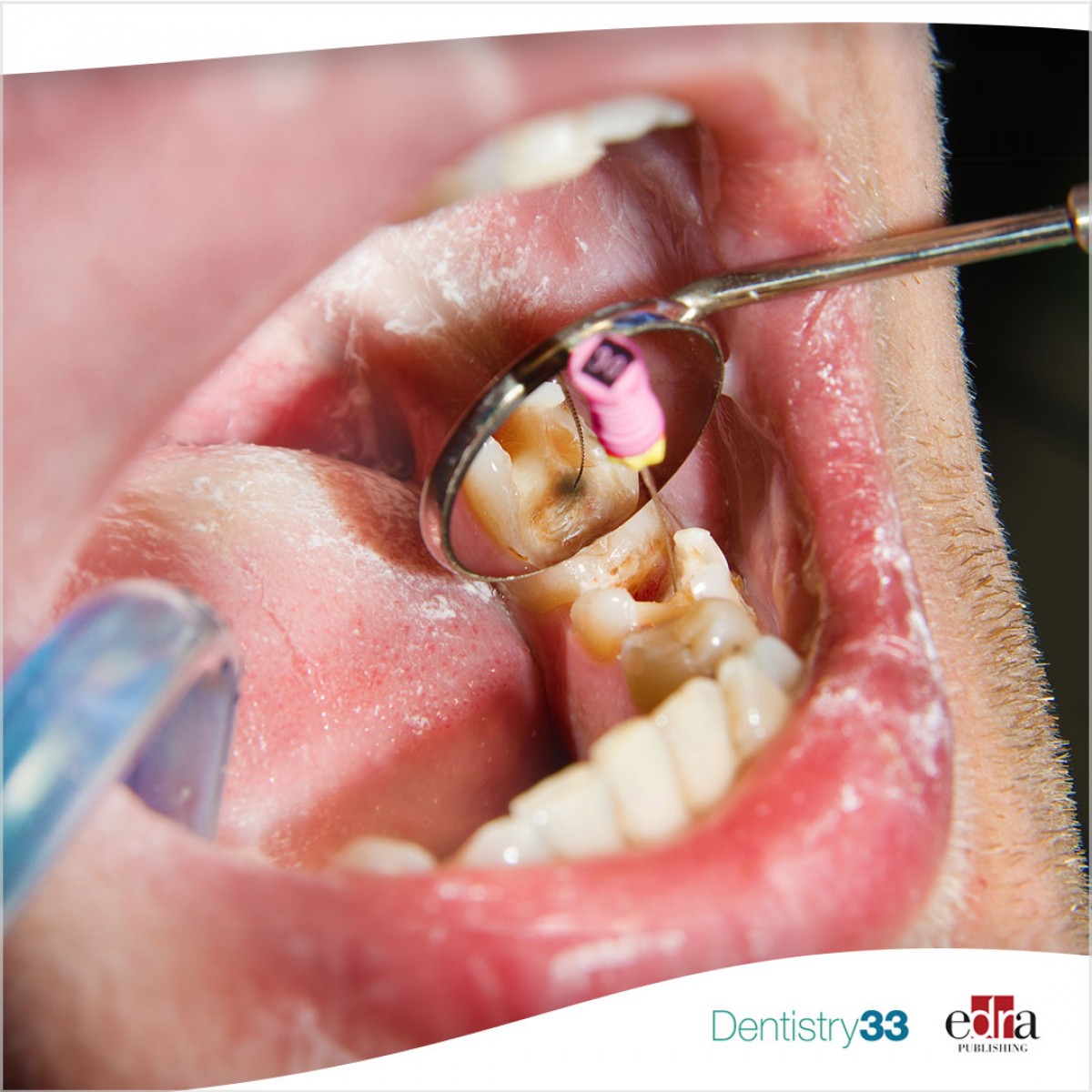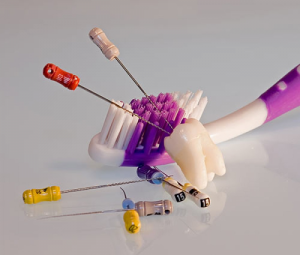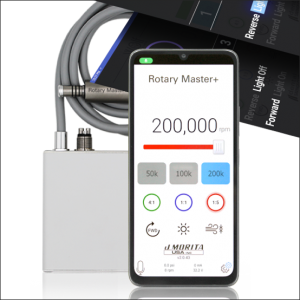
Endodontic regeneration procedure in non-vital immature teeth
Lara Figini
In 2004, a new technique was introduced for the treatment of non-vital immature teeth, termed a regenerative endodontic procedure (REP, also known as revascularization), which allows for continued root maturation in both length and thickness.
The key points of the REP procedure include minimal or no instrumentation of the dentin walls, disinfection with irrigating solutions, placement of intracanal medications, provocation of bleeding into the canal space due to the formation of a blood clot, sealing with a calcium silicate base and an effective coronal filling to prevent reinfection of the root canal system.
Unstable Ca (OH)2 calcium hydroxide and a tri-antibiotic paste (TAP; composed of metronidazole, ciprofloxacin, and minocycline) are commonly the most used intracanal medications in the CPR. However, there is still controversy in the literature regarding their beneficial properties when used in contact with undifferentiated cells and with the root walls of dentin.
Additionally, TAP tri-antibiotic paste has been associated with several complications such as antibiotic resistance, high cytotoxicity, and tooth discoloration, especially when used in high concentrations. Specifically, minocycline has been reported to be responsible for the dental chromatic alteration during the application of the TAP. Therefore, it was suggested to replace minocycline with another antibiotic such as cefaclor, clindamycin or amoxicillin.
Materials and methods
In a prospective randomized clinical study, published May 22, 2023, in the Journal of Endodontics, the authors evaluated and compared the long-term clinical and radiographic results of the regenerative endodontic procedure (REP) in the treatment of non-vital immature permanent teeth using two different intracanal medications. Forty-five patients with a total of 50 anterior and posterior non-vital immature teeth were randomly divided into one of 2 groups:
- Group 1 where unstable calcium hydroxide (Ca [OH]2) was used (n= 25) and
- Group 2 where the tri-antibiotic paste (TAP) was used (n = 25).
NeoMTA Plus (Avalon Biomed Inc) was applied for coronal sealing. The cases were followed up clinically and radiographically for 36 months. Survival rate and clinical success rate were analyzed. Preoperative and follow-up radiographs were evaluated for dimensional changes in root length, dentin thickness, apical diameter, and periapical radiolucency.
Results
At the 36-month follow-up, the success and survival rates were 81.6% and 100%, respectively, in which 79.4% of cases showed complete resolution of the periapical radiolucency with no significant difference between unstabilized Ca (OH)2 and TAP Tri-Antibiotic Paste (P. .050). Cumulative changes in root length, root dentin thickness, and apical diameter during the study period were observed in 47.9%, 77.1%, and 89.6% of cases, respectively, with no significant differences between the groups (P < 0.39). Intracanal calcifications were detected in 60% of cases with no significant differences between the two groups.
Conclusions
From the data of this study, which must be confirmed in other similar studies, it can be concluded that REP pulp regeneration treatment, both using Ca(OH)2 and TAP tri-antibiotic paste as intracanal medications, has high success and survival rates for a 36-month follow-up period with similarly favorable clinical and radiographic outcome data.
Aladdin Al-Qudah, Mohammad Almomani, MClinDent, Layla Hassoneh, MClinDent, e Lama Awawdeh. “Outcome of Regenerative Endodontic Procedures in Nonvital Immature Permanent Teeth Using 2 Intracanal Medications: A Prospective Randomized Clinical Study.” J Endod, May 2023. DOI:https://doi.org/10.1016/j.joen.2023.05.009.
 Tag
Tag
 Related articles
Related articles
Endodontics 15 November 2021
Endodontic regeneration in traumatized immature permanent teeth: single or multiple visits?
Frequently in dentistry there is the necessity to perform non-surgical treatments to regenerate the damaged dental pulp. Clinical success is based on the correct removal of organic tissues,...
Endodontics 04 February 2021
Regenerative Endodontic Procedures: state of the art and clinical procedures
Authors:Barbara G. Nunez Torrijos, Gianluca Plotino, Simone Staffoli, Eugenio Pedullà, Maurizio Bossù, Gianluca Gambarini, Antonella Polimeni
Calcium hydroxide apexification and Mineral Trioxide Aggregate (MTA) apexification are classical treatments for necrotic immature permanent teeth, but they still present some drawbacks. With both...
 Read more
Read more
Oral pathology 25 November 2025
Virtual microscopy (VM) is a technology for showing microscope slides using computers and could be considered a progression of classic methodology using optical microscopes.
For every assist this season, the insurance provider will donate $25 to TUSDM Cares for Veterans
Products 25 November 2025
J. MORITA USA, a world leader in handpiece technology, has announced the Rotary Master+ Electric Motor. Compatible with Morita TorqTech electric attachments and most competing electric handpieces on...
News 25 November 2025
Let’s be honest: nothing kills the vibe quite like bad breath. However, while 85% of people prefer for someone to tell them if their breath needs some freshening up, only 15% are willing to break...
News 25 November 2025
Vitana Pediatric & Orthodontic Partners (Vitana), a dentist-led dental partnership organization (DPO) focused exclusively on elite pediatric dental and orthodontic practices with operations in...












